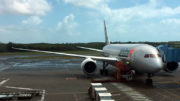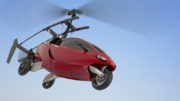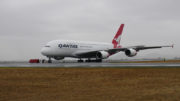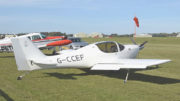 Concorde, the famous supersonic aircraft, is both a work of art and a triumph of mechanical engineering.
Concorde, the famous supersonic aircraft, is both a work of art and a triumph of mechanical engineering.
Concorde’s unique style incorporating its marriage of aesthetics and sophisticated engineering, its reputation for comfort and unfaltering efficiency, have assured its landmark status. Indeed, its unprecedented ability to sustain a cruising speed of mach 2 for up to three hours remains unchallenged.
Concorde is the world’s most successful supersonic passenger aircraft, cruising at more than twice the speed of sound at around 1350 mph, and at an altitude of up to 60,000 ft (over 11 miles high). A typical New York crossing takes a little less than three and a half hours. Travelling westwards, the five-hour time difference means Concorde arrives before she has taken off, in local time at least.
Great Britain and France started working separately towards a supersonic aircraft in 1956. They were working along such similar lines that in 1962 they decided to develop one jointly. This partnership, between the British Aircraft Corporation (now British Aerospace) and Aerospatiale, led to 20 Concordes being built. Each country manufactured one prototype, one pre-production and eight production aircraft. The first flight of the British prototype aircraft took place from Filton, Bristol on April 9, 1969. Concorde was subjected to 5,000 hours of testing by the time it was certificated for passenger flight, making it the most tested aircraft in aviation history.
The commercial supersonic era was inaugurated on January 21, 1976, with British Airways flying from London Heathrow to Bahrain and Air France from Paris to Rio. Concorde’s fastest yet transatlantic crossing was on February 7, 1996, when it completed the New York to London flight in 2 hours 52 minutes and 59 seconds.
Of the 16 production aircraft, 14 were made available for sale. British Airways (in the form of its long haul predecessor BOAC) was the world’s first supersonic airline, ordering five Concordes in July 1972, Air France ordered 4. Due to no other airlines purchasing the Concorde, the remaining unsold planes were given to Air France and British Airways by their respective governments for a nominal figure. Ironically, improvements were planned to be made to the design of all new Concordes that would have seen the Concorde become quieter and more fuel efficient with increased range, three problems that were cited by other airlines for not purchasing the Concorde.
Prior to the Air France crash shortly after takeoff from a Paris airport on July 25th 2000 Air France operated 5 craft while BA operated all 7 of their Concorde’s. Air France had retired one plane and sold it to British Airways for spares, previously most of the spares came from the 2 pre-production craft. British Airways stopped using one plane at one stage to use as spares, this was put back into service when they acquired their new spare from Air France.
After the crash, all Concordes were pulled out of service to redesign several parts that played a part in the damage suffered to the jet prior to the crash. Not all the Concorde fleet was put back into service, Two BA planes were put into storage and were not upgraded. Air France were using 4 planes after the accident, a fifth plane was undergoing a major service when it was decided to stop the Concorde service, thus all work was stopped on Air France’s last Concorde.
Concorde measures 204 ft in length – but that stretches between six and ten inches in-flight, due to heating of the airframe which also ensures the airframe is effectively corrosion-free. The characteristic droop nose is lowered to improve pilots’ visibility for take-off and landing.
The four engines – specially modified Rolls-Royce/Snecma Olympus 593s give more than 38,000 lbs of thrust each, with “reheat”. This adds fuel to the final stage of the engine to produce the extra power required for takeoff and the transition to supersonic flight. They are the most powerful pure jet engines flying commercially.
Despite the advantages of supersonic travel, plans for other supersonic aircraft have never been successful. Projects by NASA, Boeing’s Sonic Cruiser and the Russian TU-144 have come and gone, now it seems Concorde can only be seen in museums as both Air France and British Airways put the Concorde in to retirement as of October 2003. It seems the Concorde is too expensive to maintain and run in the current airline economic downturn. The expense of operating the Concorde is a problem that has been with it since the first orders for hundreds of planes dwindled down to the 14 that were purchased by the French and British government owned airlines, it may also mean that there may be a long wait before anyone builds a passenger plane as fast as the Concorde.
By: Gary Watts




